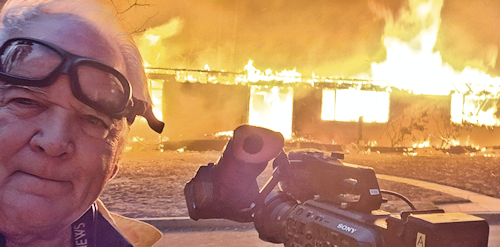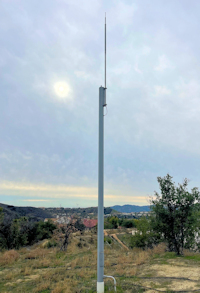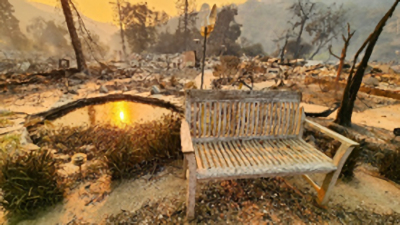
| "Communications are a nightmare!" | |||||||||||||||||||||||||||||||||||||||||||||||||||||
 | |||||||||||||||||||||||||||||||||||||||||||||||||||||
| Kort Waddell, freelance photographer for NBC Network News captured unthinkable images while on assignment January 8, 2025, in Altadena, CA. | |||||||||||||||||||||||||||||||||||||||||||||||||||||
| LOS ANGELES COUNTY, CA: “Haphazardous.” That’s how some LA area residents describe efforts by safety officials to communicate with them ahead of the firestorm that descended on their communities. “People were calling into the local AM/FM radio stations in panic... in their cars, stranded,” observes news photographer Kort Waddell who was on the ground in LA from the beginning. “People are being told one thing, then another. Emergency cell phone alerts are going rogue." Warning messages were sent to the wrong recipients or arrived late due to cellphone towers going offline and coming back online. When the Kenneth Fire in the western San Fernando Valley northwest of Los Angeles began approaching Calabasas, California, a county-issued evacuation text intended for the affected area was sent not only to Calabasas residents but also to all of LA County. Compounding that mistake, the text did not advise recipients that the evacuation was for the Kenneth Fire or the Calabasas area, saying only, “NEW: This is an emergency message from the Los Angeles County Fire Department. An EVACUATION WARNING has been issued for your area.” Naturally, countywide confusion and panic ensued – precisely what was not needed in that moment. The error cost residents precious time and resources and risked their lives.
Wisely, the City of Calabasas had the foresight to leverage multiple communication methods to prepare residents for fires: its newly upgraded Emergency Information Radio Station on 1630 kHz advised homeowners in advance about power shutoffs, the locations of emergency caches and how to “know their zone” – signaling them when to leave and by what route. The radio station had broadcast messages to educate residents how to harden their homes against fires and how to pack a ”go bag” and be ready if their zone was called. In addition to radio, the City also utilized Wireless Electronic Alerts (WEA) and Reverse 911 to reach out about evacuations, according to Mike Dyer, Calabasas Emergency Manager. Under Dyer's direction, six Emergency Information Radio Stations were also installed in nearby Santa Barbara County in 2021 and 2022 in preparation for a future wildfire or earthquake there. See "Communities Aim to be 'Radio Ready' before the Next Round."
Emergency Information Stations' unique appeal for emergency management resides in their ability to operate without third-party carriers (cellular, network, telco). Like the cans-and-string analogy, each safety agency controls the entire communication chain between the agency and the public recipient. Backed up by batteries and generators, they are also inherently resilient when the power grid bottoms out. Cloud-based servers, cellular towers or quirky-control software? There are none in the chain to disrupt the communication flow. Read more. Stations licensed in Southern California in recent years are listed below. | |||||||||||||||||||||||||||||||||||||||||||||||||||||
| Southern California Communities in and near Los Angeles with licensed Emergency Information Radio Stations (*) | |||||||||||||||||||||||||||||||||||||||||||||||||||||
| |||||||||||||||||||||||||||||||||||||||||||||||||||||
| (*) Not every radio station listed may be in operation at this time. | |||||||||||||||||||||||||||||||||||||||||||||||||||||
PO Box 51, Zeeland, Michigan, USA, 49464-0051, Phone 616.772.2300, Email
• • •

